Advertisements
Advertisements
Question
To find area, any side of a parallelogram can be chosen as ______ of the parallelogram.
Solution
To find area, any side of a parallelogram can be chosen as base of the parallelogram.
Explanation:
While calculating the area of the parallelogram, we can choose any side as base.
APPEARS IN
RELATED QUESTIONS
Find the area of the following parallelogram:
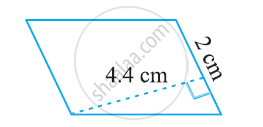
Find the height ‘x’ if the area of the parallelogram is 24 cm2 and the base is 4 cm.
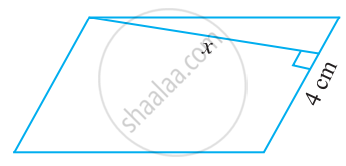
The two sides of the parallelogram ABCD are 6 cm and 4 cm. The height corresponding to the base CD is 3 cm.
Find the
(i) area of the parallelogram.
(ii) the height corresponding to the base AD.

In a parallelogram the base is three times its height. If the height is 8 cm then the area is
In a parallelogram PQRS (See the diagram) PM and PN are the heights corresponding to the sides QR and RS respectively. If the area of the parallelogram is 900 sq.cm and the length of PM and PN are 20 cm and 36 cm respectively, find the length of the sides QR and SR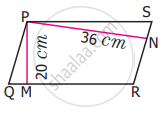
If the base and height of a parallelogram are in the ratio 7 : 3 and the height is 45 cm, then fixed the area of the parallelogram
Find the area of the parallelogram ABCD if AC is 24 cm and BE = DF = 8 cm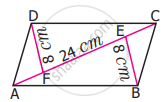
The area of the parallelogram ABCD is 1470 sq.cm. If AB = 49 cm and AD = 35 cm then, find the height, DF and BE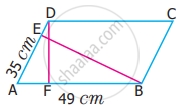
Area of parallelogram ABCD (see the figure) is not equal to ______.
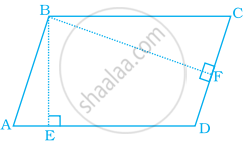
Perpendicular dropped on the base of a parallelogram from the opposite vertex is known as the corresponding ______ of the base.
